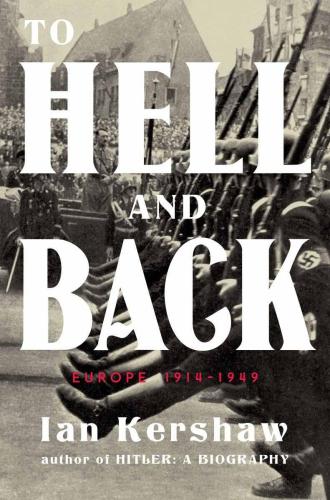
To Hell and Back
Europe 1914-1949
کتاب های مرتبط
- اطلاعات
- نقد و بررسی
- دیدگاه کاربران
نقد و بررسی

August 17, 2015
Kershaw (The End), an acclaimed British historian and biographer of Hitler, looks at a 36-year stretch of the 20th
century when Europe was dominated by Germany, from the outbreak of World War I to the nation’s division in the
aftermath of World War II. Kershaw’s strength is political and economic history—he devotes less attention to military, social, and intellectual matters—and he uncovers a number of largely forgotten events, including the 1919–1921 conflict between Germans and Poles in the Baltics and Upper Silesia that claimed 100,000 lives. Unfortunately, Kershaw’s book suffers from three significant shortcomings. His prose is dull, in part because there are insufficient telling anecdotes, and he is prone to capturing history via tangential statistics. He also stretches himself thin in writing about peripheral states, as when he addresses the nature of authoritarian rule in Estonia in the 1930s, which takes up more space than his attention to the surrender of France to Nazi Germany in June 1940. Finally, while Kershaw possesses superb knowledge of Britain and Germany and is adequate on the U.S.S.R., he repeatedly glosses over developments in France during the period. These deficiencies make Kershaw’s fact-laden and well-organized history less than satisfying. Maps & illus. Agent: Andrew Wylie, the Wylie Agency.

September 1, 2015
From the so-called golden age that preceded the guns of August 1914 to the early frost of the Cold War, a much-honored British historian takes on the 20th-century history of Europe. In this first of two projected volumes, Kershaw (The End: The Defiance and Destruction of Hitler's Germany, 1944-45, 2011, etc.) confines himself to the century's war-torn first half, examining first the genesis of the ghastliness of World War I, where the European nations, in David Lloyd George's phrase, unwittingly "slithered over the brink" into armed conflict. Then followed the even greater calamity of World War II, foreseen by many and considered "the unfinished business of the first." Kershaw's capacious theme, an examination of "the driving forces that shaped the continent as a whole," permits no detailed coverage of any character, development, or event, no matter how momentous, but he certainly has not missed anything of significance. He tracks the shifting social, political, cultural, and economic trends and is especially sharp discussing the effects of the Great Depression; the post-WWI competition for dominance among the incompatible political systems of communism, fascism, and liberal democracy; the peculiar cultural moment between the world wars, particularly in Paris and Weimar Germany; the drift of politics decisively to the right during the Depression; the distinctions among the dictatorships of Stalin, Mussolini, and Hitler; the condition, by 1939, of three-fifths of Europeans living in 16 states under some form of authoritarian rule; and the second war's "bottomless pit of inhumanity," including the murder of the Jews. Kershaw concludes with a somewhat less successful appraisal of the vastly altered geopolitical landscape following WWII, the social and economic disruptions, the physical ruin of the continent, and the responses to the devastation offered by the Christian churches, leading intellectuals, and popular entertainments. An ambitious, dense, sometimes-difficult treatment of a vast topic.
COPYRIGHT(2015) Kirkus Reviews, ALL RIGHTS RESERVED.

October 15, 2015
Historian Kershaw (Hitler; Fateful Choices; The Nazi Dictatorship) explores the causes and consequences of World Wars I and II, avoiding the pitfalls of assuming reader knowledge of the era while also making the complex topics of economic, humanitarian, and political upheaval accessible. With excellent insights into what created these conflicts truly global in scale--and into the unique struggles of eastern European countries--the author provides useful descriptions for any student of 20th-century European history. This work relies primarily on secondary source research, other than the sections on Germany which Kershaw was able to substantiate with primary source material. VERDICT As an overview reference, this work is extensive and authoritative. Well suited to casual readers and professional historians alike, this enlightening consideration of the World Wars and the interwar years is a worthwhile purchase. It will delight fans of Barbara Tuchman's The Proud Tower: A Portrait of the World Before the War, 1890-1914. [See Prepub Alert, 5/11/15.]--Felicia J. Williamson, Sam Houston State Univ. Lib., Huntsville, TX
Copyright 2015 Library Journal, LLC Used with permission.

June 1, 2015
The "Penguin History of Europe" series has been moving along nicely, but it does especially well to snatch Kershaw, a major biographer of Hitler knighted for his services to history, to author its volume covering Europe in the first half of the 20th century. (Kershaw will write the volume on the second half of the 20th century as well.) Featuring fresh scholarship.
Copyright 2015 Library Journal, LLC Used with permission.

























دیدگاه کاربران